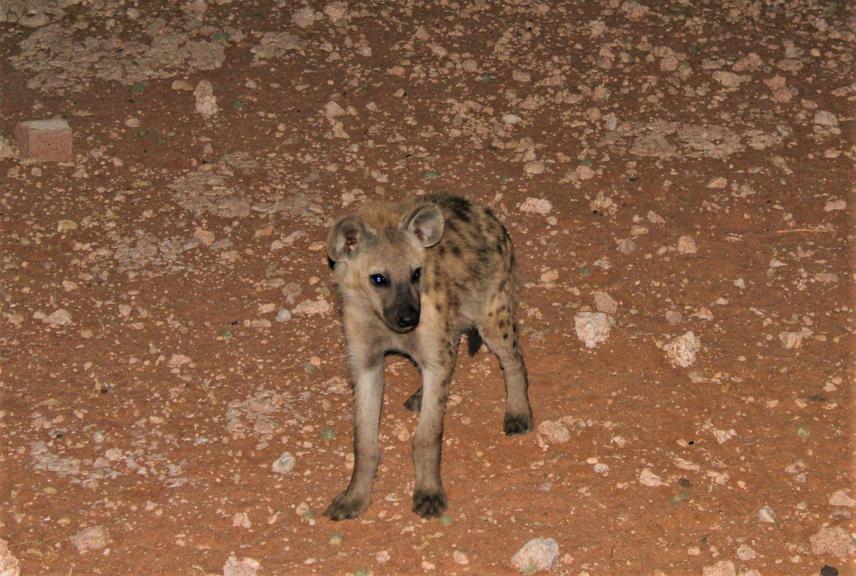Karl Sebastian Fester
Vultures are a key scavenger group, but many species are threatened with extinction either globally and/or with local extirpations. Effective conservation must address the direct threats, like habitat loss and poisoning, as well as supporting crucial non-scavenger species interactions, such as sufficient herbivore populations and the processes turning living animals into useable carcasses for vultures. A key question is whether carnivore loss benefits or threatens vultures, since carnivores produce higher carcass availability, but also scavenge themselves and thus compete with vultures. This misses opportunities for co-management that can achieve greater species conservation success.

Juvenile spotted hyaena (Crocuta crocuta); Tiras Mountains, Namibia. © Karl S Fester.
Spotted hyaenas (Crocuta crocuta) are not only scavengers but very effective predators and interact with vultures in a variety of ways. For example, spotted hyaenas will watch for vultures to locate distant carcasses, and vultures are known to visually follow hunting hyaenas and other carnivores to quickly access carcasses. Additionally, spotted hyaenas efficiently crush bones to free marrow and calcium resources that benefit vultures and promote healthy chick development. Namibia’s large carnivore guild is depleted and fragmented, and its six extant vulture species are listed as nationally threatened, including the white-backed vulture (Gyps africanus) and cape vulture (Gyps coprotheres) that are Endangered and Critically Endangered, respectively. Likewise, spotted hyaenas are not globally threatened, and therefore are afforded minimal conservation concern. This has allowed the Namibian spotted hyaena population to be listed as nationally Vulnerable, with an estimated 615-715 individuals remaining.
My project aims to quantify carnivore-vulture interactions to improve conservation co-management of both groups. Specifically, I will look at how spotted hyaena presence and absence in Namibia impacts vultures through the availability of carcasses, changes in vulture feeding behaviour, and the interspecific interactions between threatened vultures and other scavengers. To achieve this, I will use a replicated study on 14 Namibian properties that either support spotted hyaenas, or from which they have been extirpated. I will compare carcass availability and vulture feeding and interspecific interactions by remotely monitoring naturally facilitated wildlife carcasses with motion-sensor camera traps. The outcomes will help reveal co-management strategies for spotted hyaena and vulture conservation. I will also engage with local stakeholders in the tourism and local farming communities, to raise awareness about scavenger interactions, and the consequences of their further declines. Results will further be disseminated through academic publications and Namibian newsprints.
Header: White-backed (Gyps africanus) and cape (Gyps coprotheres) vultures resting in a tree; Naukluft Mountains, Namibia. © Karl S Fester.